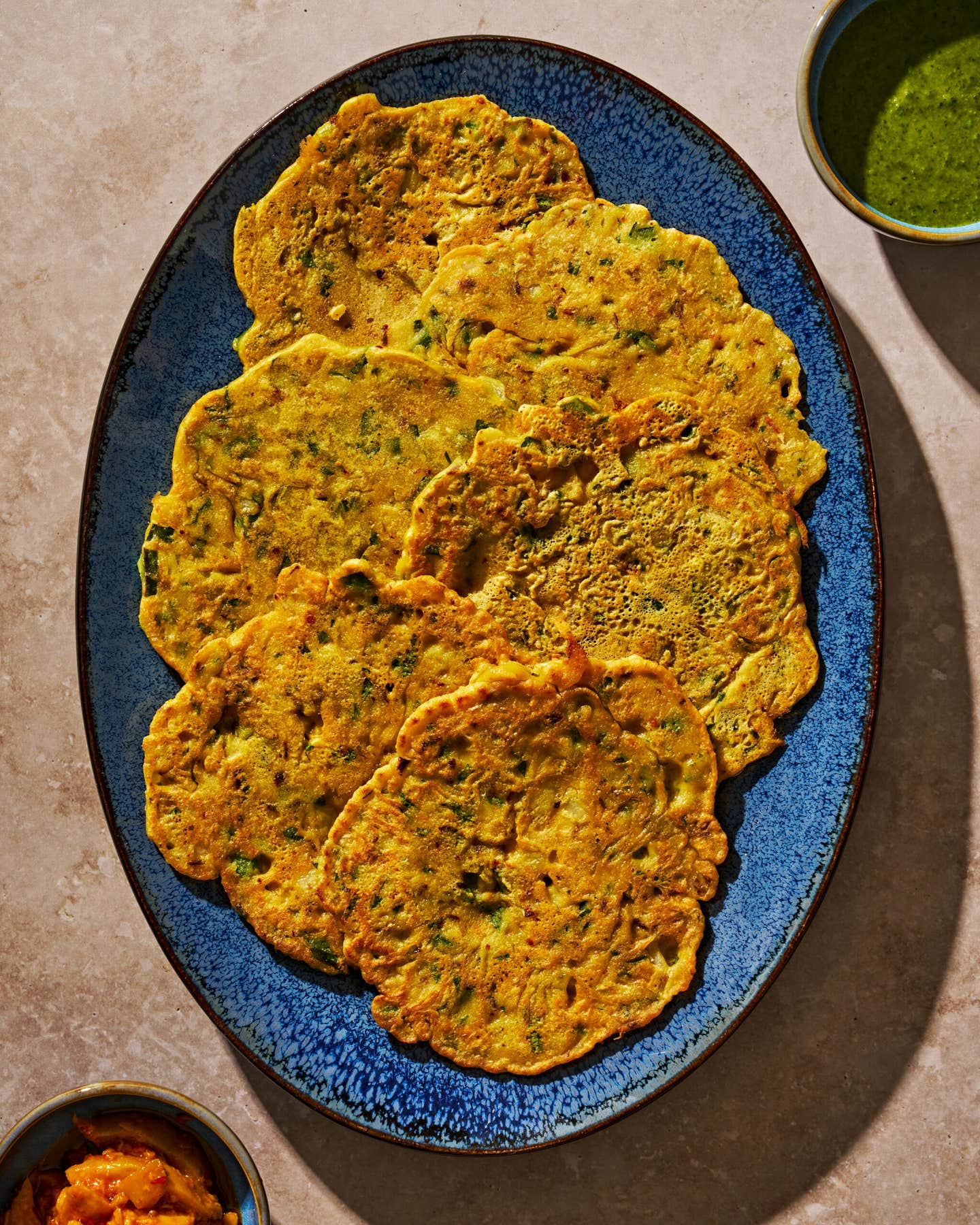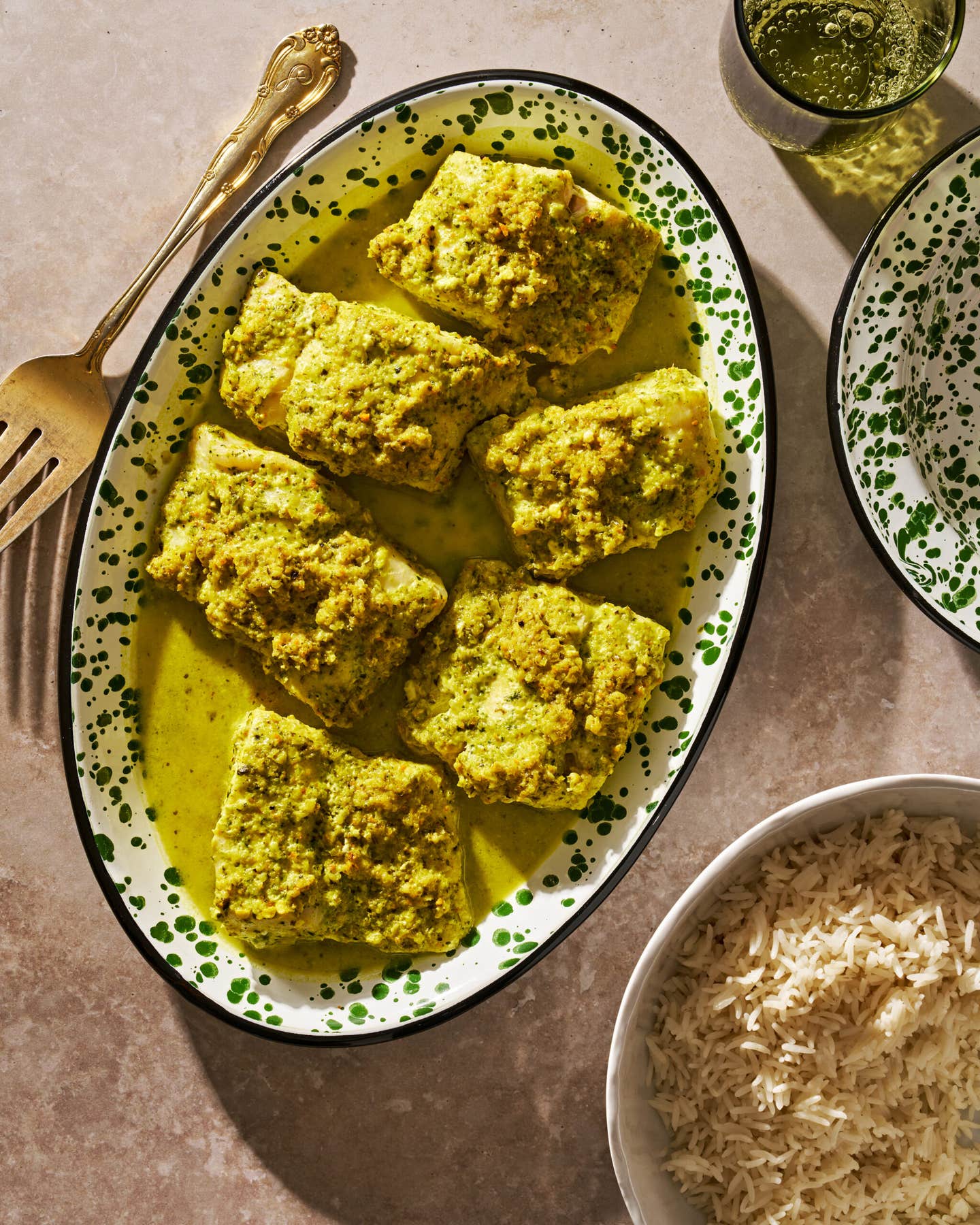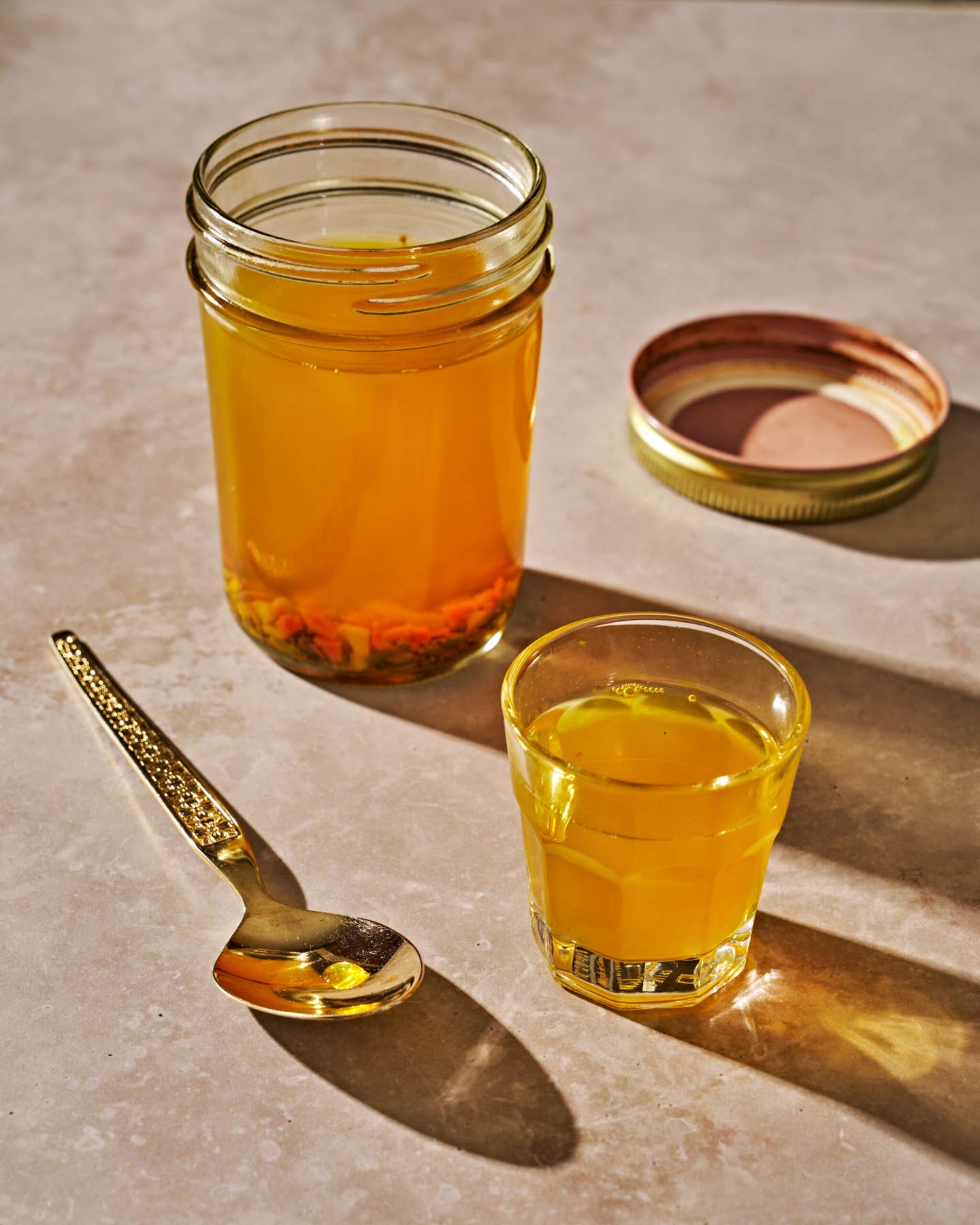We Should All Be Cooking With Fresh Turmeric
The versatile root lends a peppery zing and golden hue to everything from pancakes to pickles.

When the aroma of turmeric hits my nostrils, it immediately transports me to my grandparents’ house in Punjab, where my family spent many summers. Growing up in Bengali, I never saw fresh turmeric, but the plant was abundant during our holidays in Punjab. As my maternal grandmother Nani prepared traditional dishes, from paratha to pulao, her cooking filled the air with a warm, earthy scent. Memories of those meals linger in my mind every time I reach for this golden root today.
Known scientifically as Curcuma longa, turmeric has been cultivated and cherished for millennia in India. It is a foundational spice in Indian cuisine and lends a peppery aroma and sunny hue to curries, rice, smoothies, pickles, and so much more. The ancient texts of Ayurveda, the traditional Indian system of medicine, praised the ingredient—an excellent source of curcumin—for its anti-inflammatory, antioxidant, and antibacterial merits. (Pro tip: Enjoying turmeric with black pepper increases how much of the curcumin our bodies absorb.) Because of this, Indian families often incorporate turmeric into home remedies like haldi doodh, also called turmeric milk, a healing drink for nursing a cold.
Beyond its status as a culinary powerhouse, turmeric is also a prominent cultural symbol. It plays a role in celebrations such as weddings, during which turmeric paste is applied to the bride and groom's skin before the ceremony as a symbol of purity and divinity. People even decorate the entrances of their homes with rangoli—turmeric paste shaped into intricate patterns—to invite positive energy and ward off evil spirits. The ingredient is also a potent natural dye that can impart everything from fabrics to doughs with a bright yellow hue.
Though an increasing number of chefs in the U.S. are making turmeric powder an indispensable part of their pantry, its fresh counterpart also warrants a place in your cooking arsenal. The gingery flavor and peppery quality are punchier and more robust than the dried variety, and I’ve found that this added brightness is especially noticeable in applications that involve cooking over low heat (think long braises and gentle steaming), or no heat at all (like pickles and smoothies).
When cooking with fresh turmeric, know that the ingredient should be sealed in an airtight container and stored in the fridge, where it should keep for up to two weeks. Keep in mind that many recipes call for peeling and then grating or cutting the root, so make sure to wear gloves to avoid staining your hands. When substituting dried turmeric with fresh, you should replace the powder with about triple the amount of the fresh stuff (e.g., 1 teaspoon of ground dried turmeric = 1 tablespoon of fresh turmeric). If you’re new to using fresh turmeric, or are looking for more ideas on how to put it to work in the kitchen, here are some of my favorite ways to cook with it.
Make pickles.
Whenever I find myself with a lot of turmeric, I slice the root thinly, then season the pieces with lemon juice, vinegar, salt, rapeseed oil, and crushed black mustard seeds. The pickles are crunchy and leave a pleasantly numbing sensation on the tongue, and they’re the perfect balance for boldly flavored Indian dishes.
Add it to smoothies and shakes.
I love including freshly grated turmeric in all sorts of blended cold drinks, from milkshakes to green juices. Blitzing it with mango and banana, for example, results in a beautifully yellow, naturally sweet smoothie. I also like to add creamy avocado or cooling yogurt to the mix, which makes the drink ultra luscious and perfectly balances out turmeric’s mildly bitter flavor.
Flavor batters.
Whether you’re making a loaf of bread, a pile of fritters, or a platter of pancakes, don’t hesitate to grab your grater and sprinkle a few teaspoons of fresh turmeric directly into the batter. You’ll end up with a hint of earthiness in every bite, and a lovely golden color in the finished product.
Brew a soothing tea.
Whenever someone in my family is feeling under the weather, I brew a tea with turmeric, black pepper, cinnamon bark, ajwain (carom seeds), and fennel seeds. The mixture soothes the stomach and throat as much as the soul, especially during cold winter months.
Add to stews and curries.
Turmeric is essential in the stews, curries, and soups I make at home, from dal to sabzi. It infuses the rich, creamy dishes with a mild peppery zing that lends complexity and warmth. Next time you’re making a pot of beans or a meaty braise, add a touch of fresh turmeric to make the dish sing.
Use the juice as a natural dye.
You don’t have to mess around with food coloring if you’ve got turmeric on hand. After peeling and chopping the root, blitz it with a splash of water in a blender to make a runny paste. Pass the mixture through a sieve, then set it aside at room temperature for a few hours so the color can intensify. Add a couple teaspoons of this liquid to, say, dough or batter, and the results will be stunningly sunny.
Recipes




Keep Reading
Continue to Next Story










